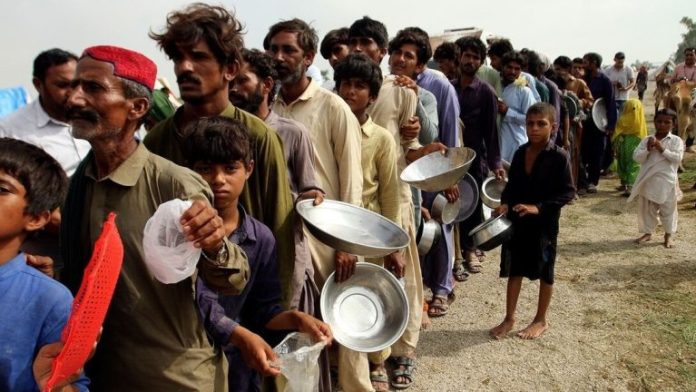The World Bank has revealed that an additional 12.5 million people fell below the poverty line during the last financial year due to poor economic conditions in Pakistan. The proportion of people living below the poverty line in Pakistan has increased to 39.4 per cent. The World Bank has urged Pakistan, which is facing financial challenges, to take immediate steps for financial stability.
The World Bank has written in the policy draft that poverty in Pakistan has increased from 34.2 to 39.4 per cent within a single year, due to which another 12.5 million people have fallen below the poverty line. The poverty line is set at $3.65 per day. That is, 39.4 per cent of the population in Pakistan is forced to live on less than $3.65 a day.
95 million under poverty line
According to the report, about 95 million Pakistanis are currently living in poverty.
“Pakistan’s economic model is no longer reducing poverty and the standard of living has fallen behind peer countries”, commented Tobias Haq, a leading economist at the World Bank.
The World Bank has emphasized that fiscal problems should be solved by taxing key sectors such as agriculture and real estate while reducing unnecessary expenditure. The effort aims to achieve economic stability through fiscal adjustment of more than 7 percent of the economy.
Citing the continuing rise in poverty levels, the World Bank has identified areas that require reforms for the incoming government. These areas include low human development, unsustainable financial conditions, over-regulation of the private sector and challenges in the agriculture and energy sectors.
The proposed measures include an immediate 5 percent increase in the tax-to-GDP ratio and a reduction in spending to about 2.7 percent of GDP. The World Bank has made several recommendations to increase government revenues. These recommendations include withdrawing tax exemptions, increasing tax burden on real estate and agriculture sectors. Important policy changes have also been emphasized.
The World Bank notes that Pakistan has the potential to collect taxes equivalent to 22 percent of GDP, but the current ratio is only 10.2 percent. It has proposed to reduce tax exemptions, increase taxes on land and property and generate another one percent of GDP from the agricultural sector to generate a tax equivalent to two percent of GDP.
The World Bank has proposed the mandatory use of computerized national identity cards for transactions and especially for assets. It has also recommended reducing energy and commodity subsidies, implementing a single treasury account and implementing temporary austerity measures to save around one percent of GDP in spending.
Bad fiscal management
By 2022, the government had deposits of more than Rs. 2,000 billion in commercial banks and instead of using these idle funds, the government had to pay Rs. 424 billion in interest due to sovereign borrowing.
For the medium term, the World Bank has also suggested reducing current expenditure on federal and provincial development projects, reducing expenditure on loss-making institutions and raising the standard of development expenditure to save around 1400 billion rupees. The cumulative effect of these short- to medium-term savings would be 2.7 percent of GDP.
The World Bank has also cited heavy subsidies given by Pakistan to the agricultural sector as a reason for low productivity.
The World Bank proposed potential savings of Rs. 328 billion by closing ministries in the provincial domain. Additionally, it has been proposed to save 70 billion rupees by handing over the Higher Education Commission to the provinces and another 217 billion rupees by sharing the cost of BISP with the provinces.

